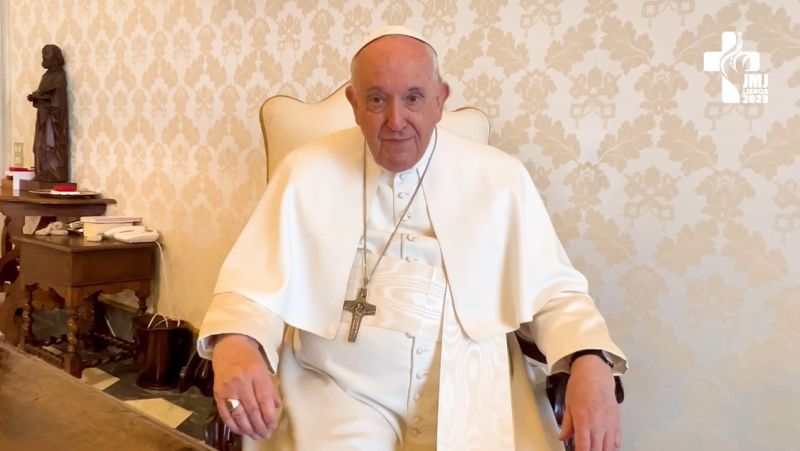
Rome Newsroom, May 4, 2023 / 07:00 am (CNA).
Pope Francis has sent a video message to the teens and young adults preparing to attend World Youth Day in Lisbon, Portugal, in August.
“I’ll see you in Lisbon,” he said, according to an English translation of the message, delivered in Spanish. The message was published on the Vatican’s YouTube page on May 4, just under three months before the Aug. 1-6 international gathering.
“Dear young people, you are getting ready for World Youth Day,” Pope Francis said. “There are three months to go. I can imagine the things you must have on your mind… how you’re going to: make it happen, request your work or study permit, get what you need for your trip, so many concerns, but always looking towards that horizon, that dream.”
“To participate in WYD is something beautiful,” he said. “Prepare yourselves with that enthusiasm. Put hope in that. Have hope… because one grows a lot at an event like WYD.”
World Youth Day was established by Pope John Paul II in 1985. The weeklong gathering usually attracts hundreds of thousands of young people.
Pope Francis said the Portuguese capital would host the global Catholic gathering of young people at the closing Mass of the last international World Youth Day in Panama City in January 2019.
The event is typically held on a different continent every three years, with the presence of the pope. In 2020, the Vatican announced that World Youth Day would be postponed by one year due to the COVID-19 pandemic.
Lisbon, a city of 505,000 people, is about 75 miles from Fatima, one of the most visited Marian pilgrimage sites in the world. A report on “European Young Adults and Religion,” published in 2018, found that Portugal has one of the highest levels of weekly Mass attendance among young people in Europe.
In his video message, Pope Francis also shared “a secret” to preparing well for World Youth Day.
“To prepare well, it’s good to look towards your roots,” he said, encouraging young people to spend time with the elderly before the gathering.
“Many of you have grandparents. Visit your grandparents and ask them: ‘In your time did World Youth Day exist?’ — Surely not. ‘And what do you think I must do?’ Talk a little with your grandparents. They’ll give you wisdom.”
If you value the news and views Catholic World Report provides, please consider donating to support our efforts. Your contribution will help us continue to make CWR available to all readers worldwide for free, without a subscription. Thank you for your generosity!
Click here for more information on donating to CWR. Click here to sign up for our newsletter.






Mentioned in the article is that in 1985 St. John Paul II founded World Youth Day. Back then, yours truly found his Letter to Youth helpful in teaching confirmation classes, and here’s the link for the current generation: https://www.vatican.va/content/john-paul-ii/en/apost_letters/1985/documents/hf_jp-ii_apl_31031985_dilecti-amici.html
Today, Pope Francis wisely counsels the youth to ask their grandparents “And what do you think I must do.” St. John Paul II concurs, also speaking of hope and the future– and throughout his Letter he reflects on Christ’s answer to this question when posed by the young man in the Gospel (Cf. Mk 10:17-22; Mt 19:16-22; Lk 18:18-23).
WYD Lisboa – here we come. All the best to the organizers and the participants of the spiritual mega event.
Parents don’t let your children be influenced by this confused man. On one occasion of speaking to a large group of young people, he advised them unambiguously to absorb the wisdom of atheists. There is no limit to what his narcissistic mind can create. Keep your children away.